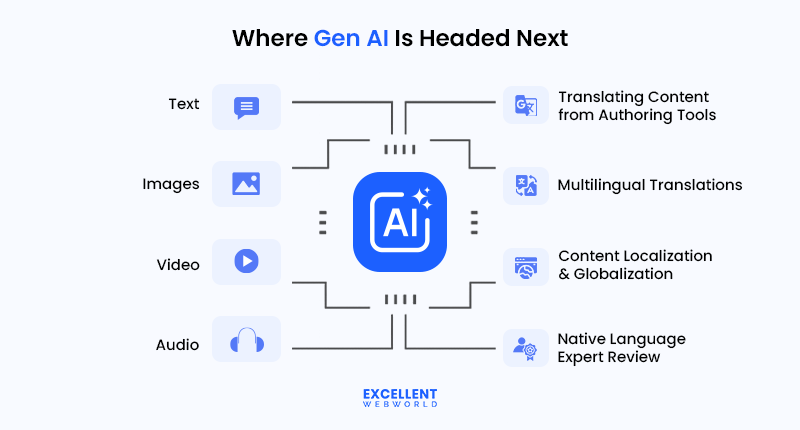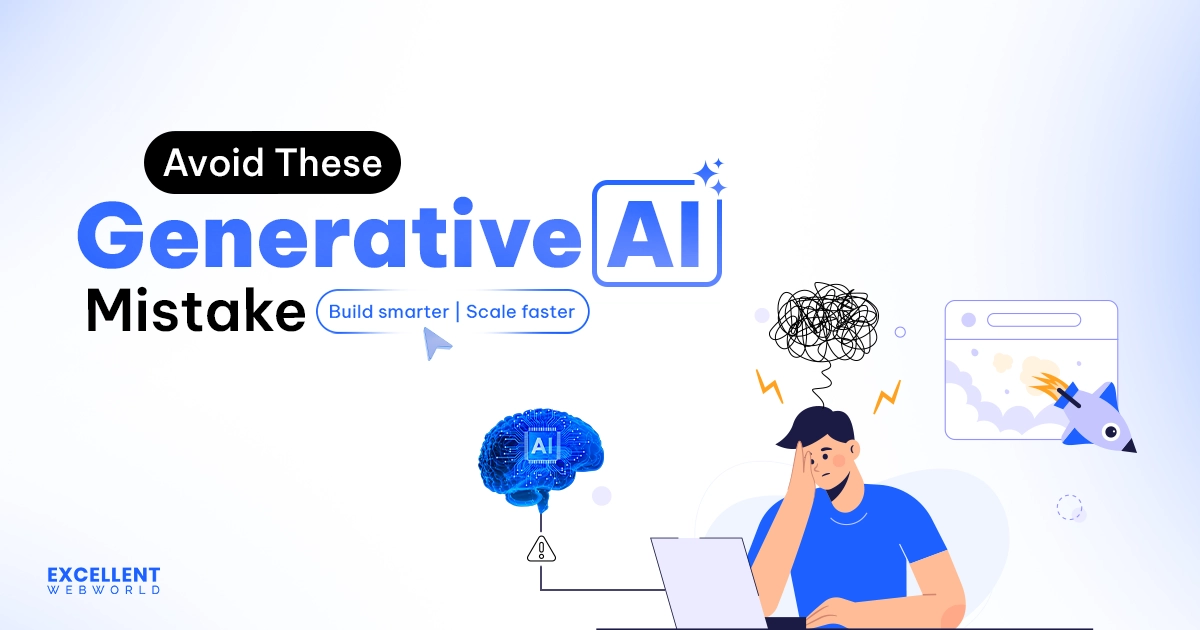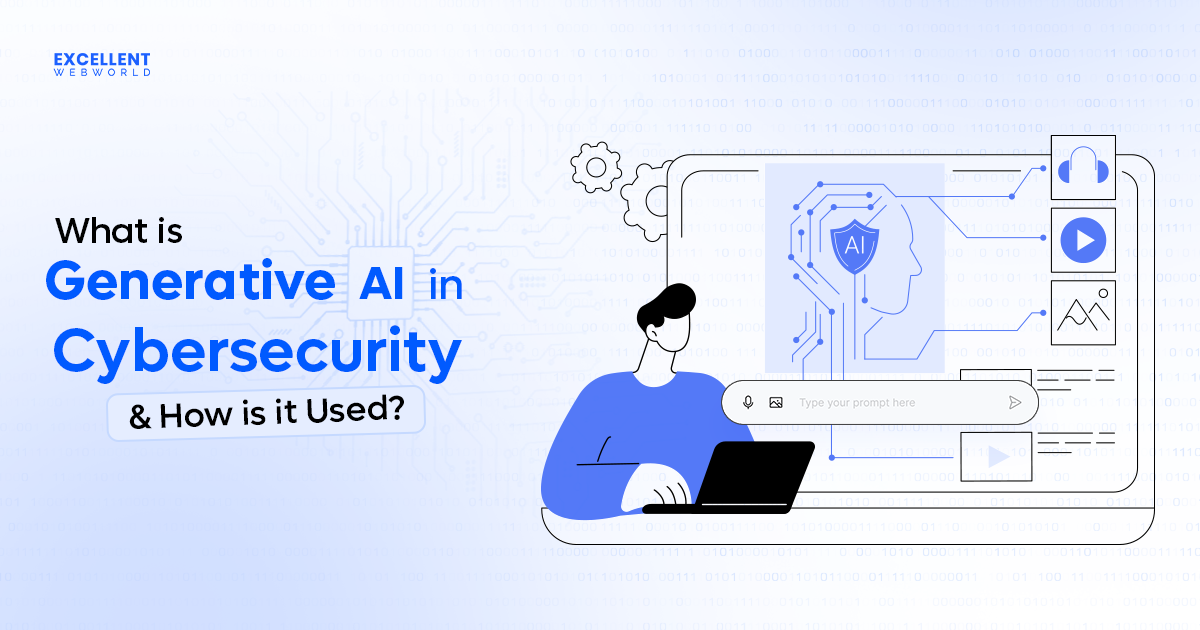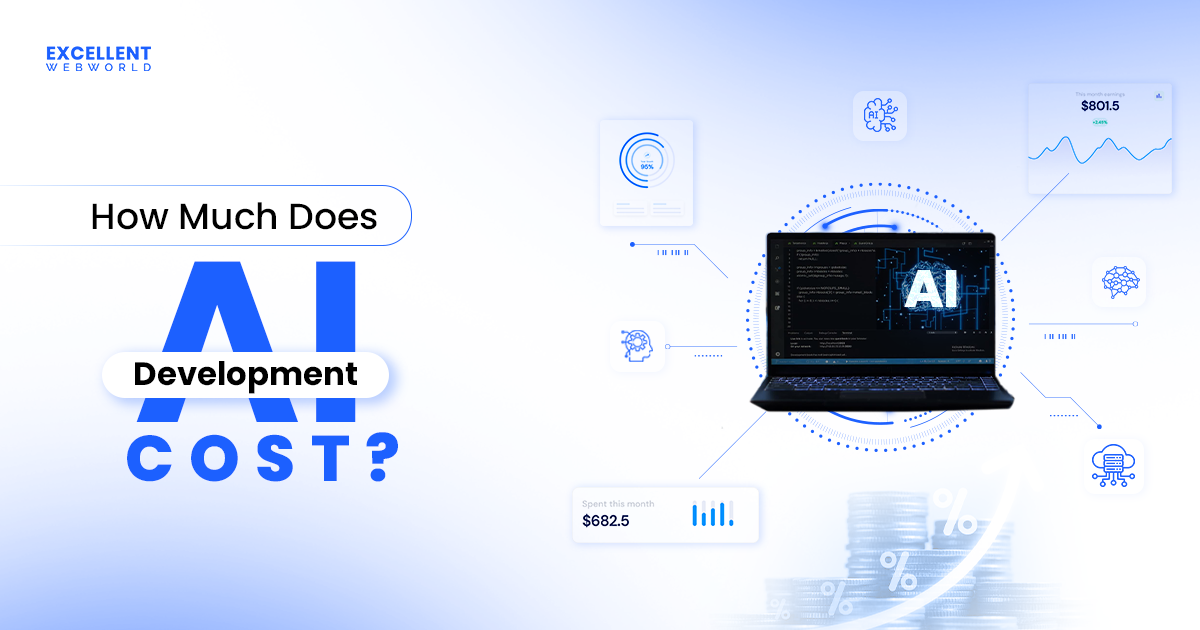Can generative AI really live up to the hype or are we overlooking the real risks?
From creating content and designing visuals to writing code, generative AI is changing how we work, think, and innovate. But with all this promise comes rising generative AI challenges that businesses can’t afford to ignore.
While big tech players like OpenAI, Microsoft, and Google are continuously pushing the boundaries, even they’re dealing with various challenges of generative AI, from biased results and misleading content to complex integrations and high costs.
However, it’s not just about the tech. The real trouble often lies in poor planning, unclear strategy, and outdated systems.
As more companies jump in, Generative AI implementation challenges are becoming harder to avoid, like data privacy issues, a lack of skilled talent, and adapting current processes. These aren’t just technical barriers; they’re operational and cultural too.
Still, with the right mindset, tools, and structure, these Generative AI risks can be managed—and even turned into strengths.
So what’s holding your business back?
Let’s break down the common roadblocks to enterprise generative AI adoption and how to move past them.
What Is Generative AI and Why Is It So Disruptive?
Generative AI is a type of artificial intelligence that can create brand-new content like text, images, music, or even code based on what it has learned from large datasets.
It’s already being used across industries, with Generative AI use cases ranging from automating support chats to generating marketing content and personalizing user experiences. This technology is transforming the way businesses operate, enabling faster ideation and enhancing human creativity.
However, despite the growing excitement, there are still real generative AI challenges that can’t be ignored. From data quality issues to bias in models, enterprises face multiple obstacles in deploying generative AI at scale. These enterprise AI challenges often slow down adoption, especially when it comes to integrating AI systems into existing workflows.
That’s why it’s important to have a clear AI development process in place. Without it, businesses may struggle to overcome generative AI adoption hurdles and fail to realize its full potential.
What Are the Challenges of Generative AI?
Generative AI comes with its own set of challenges. Businesses often face generative AI integration hurdles and generative AI data privacy concerns when deploying these tools. There’s also pressure to ensure generative AI ROI and manage generative AI cost optimization as models scale. Add in compliance risks, security concerns, and the impact on the workforce, and it’s clear why generative AI challenges demand serious attention. From large language model challenges to AI model customization difficulties, navigating these obstacles is key to success.
1. Can Generative AI Be Free of Bias and Discrimination?
One of the biggest challenges of generative AI is that it learns from historical data, which can carry hidden biases. These lead to unfair or skewed results in AI outputs. Regular audits, diverse training datasets, and inclusive teams can reduce AI-driven software development issues related to discrimination.
2. Why Are So Many Companies Lacking a GenAI Roadmap?
A clear roadmap is often missing in generative AI implementation, especially in early stages. Many organizations jump in without aligning AI with business goals. Building a strong plan with leadership input helps overcome AI model customization difficulties and improves Generative AI ROI.
3. How to Solve Generative AI’s Privacy and Security Risks?
Large language models often learn from sensitive data, which creates serious generative AI data privacy and generative AI security concerns. Misuse or leakage of confidential info can lead to trust and legal issues. To tackle these generative AI challenges, businesses must use data anonymization, encryption, and follow strict governance policies.
4. Is Generative AI Fueling the Spread of Misinformation?
Deepfakes and fake content are some of the most visible generative AI risks today. When AI generates misleading or false outputs, the result is a credibility crisis. Transparent labeling and verification tools are essential to prevent misinformation and secure enterprise generative AI adoption.
5. What Makes Generative AI Hard to Scale for All Organizations?
Scaling AI across teams and tools is among the key enterprise AI challenges. Limited infrastructure and lack of modular design slow adoption. Cloud-based platforms and modular frameworks help solve AI implementation related challenges and make it easier to scale responsibly.
6. Lack of Skilled Workforce
There’s a big gap in AI talent today, which directly affects generative AI adoption hurdles. Developers and data scientists with real-world experience are hard to find. Upskilling current teams, partnering with universities, or hiring expert consultants can reduce the Generative AI workforce impact.
7. Is the Cost of Running Generative AI Sustainable?
Training and operating AI models can be very expensive, especially at scale. These Generative AI cost optimization issues stop many businesses from going all-in. Using AI-as-a-Service (AIaaS), optimizing models, and choosing energy-efficient hardware can help maximize Generative AI ROI.
8. How Do We Ensure the Accuracy of AI-Generated Content?
Sometimes, AI models make things up or generate confusing results and this is called “hallucination.” These large language model challenges affect trust and usefulness. Human-in-the-loop systems and proper review pipelines are key to tackling AI-driven software development issues.
9. What Governance and Compliance Frameworks Are Needed for GenAI?
Governance is one of the most overlooked generative AI challenges. Without rules and oversight, things can spiral out of control. Building strong internal policies and staying updated with regulations like GDPR or the AI Act helps meet Generative AI compliance requirements.
10. How Can GenAI Work With Legacy Systems?
Older systems don’t always play nicely with new AI tools, which creates Generative AI integration headaches. This is one of the major obstacles to generative AI deployment in large companies. APIs, middleware, and phased rollouts make integration smoother and more manageable.
Here is a solution table for all the challenges with solutions
| Generative AI Challenge | Solution |
|---|---|
| Data Privacy & Security Risks | Generative AI challenges like data leaks can be tackled with encryption, anonymization, and strong AI governance policies. |
| Bias in AI Models | One of the key challenges of generative AI is biased output—fix it with better data diversity and regular model audits for fairness. |
| Spread of Misinformation | Generative AI risks like fake content can be reduced with tools that boost model transparency and explainability in AI. |
| Lack of a Strategic Roadmap | Many businesses fail in responsible AI deployment due to missing plans—start with a clear vision and top-down leadership support. |
| Scalability Issues | Generative AI model scalability can be solved using cloud migration for AI and modular infrastructure that grows with your needs. |
| Lack of Skilled Workforce | The AI workforce gap is real—bridge it with upskilling, AI consultants, and partnerships with tech universities. |
| High Computational Costs | Generative AI cost optimization is possible through AIaaS, efficient hardware, and smarter training techniques. |
| Quality Control & Hallucinations | To fix inaccurate AI-powered content creation, use human reviewers and validation steps throughout the workflow. |
| Integration with Legacy Systems | AI integration issues? Connect old systems using APIs and modern middleware for smoother change management for AI. |
| Governance & Compliance Gaps | Meet AI regulatory compliance by building clear internal rules and aligning with global standards like GDPR and AI Act. |
What Does the Future of Generative AI Look Like?
The future of generative AI is set to be game-changing. We’ll soon see AI that can generate and understand not just text or images, but also audio, touch, and even smell—unlocking new immersive experiences. This leap in AI-powered content creation brings exciting opportunities, but also new generative AI challenges like managing complexity and ensuring model transparency.
We may also see personalized AI companions that help with daily tasks or offer emotional support, raising new AI ethics in business and responsible AI deployment questions. As enterprise generative AI adoption grows, it’s important to tackle AI infrastructure requirements, invest in cloud migration for AI, and improve data preparation for AI projects.
Looking ahead, AI-human collaboration could reshape creativity itself, but it also demands stronger AI governance, better explainability in AI, and smarter change management for AI. Some future systems may even use quantum computing or moral reasoning, which will add to the challenges of generative AI around compliance, scalability, and risk.
To keep up with these advances, businesses need to rethink strategies, update their business process design for AI, and stay compliant with evolving AI regulatory frameworks.
Why Consider Excellent Webworld for Generative AI Development Service?
Generative AI holds massive potential from boosting creativity to transforming how businesses operate. But with that power come serious generative AI challenges like data privacy risks, bias, and high implementation costs.
As more companies explore enterprise generative AI adoption, it’s important to weigh the rewards against the generative AI risks. Jumping in without a plan can lead to costly setbacks, compliance issues, or broken trust.
To succeed, organizations must tackle the challenges of generative AI by building clear AI strategies, ethical frameworks, and responsible deployment practices. Here Excellent Webworld can help you, we combine deep AI expertise with solid software development service experience to help you move fast and build smart.
With over 13 years of experience as the #1 AI development company globally, and over the past years, recognized as a leading and the most trustworthy Generative AI development company, we’re here at your service.
Our team of AI experts has successfully developed, integrated, and modernized high-performance AI solutions, which makes us the perfect partner to assist you with your AI journey.
Whether it’s AI chatbot development, Agentic AI development, general AI consulting, or hiring AI developers that you need help with, we’re just a call away. Not sure if AI is the right approach for you? Schedule a business consultation without further delay.
FAQs on Generative AI Challenges
Generative AI creates new content like text, images, music, or code—based on what it has learned from data. It’s used in design, writing, automation, and product innovation.
It can be, if misused. Risks include misinformation, biased outputs, or data leaks—making ethical use, privacy, and safety key challenges of generative AI.
ChatGPT is one example of generative AI focused on conversations. Generative AI as a whole covers many formats—text, image, video, sound, and more.
Expect multimodal AI, creative AI-human collaborations, and smarter, ethical agents. But along with progress come challenges like governance, transparency, and responsible scaling.

Article By
Mayur Panchal is the CTO of Excellent Webworld. With his skills and expertise, He stays updated with industry trends and utilizes his technical expertise to address problems faced by entrepreneurs and startup owners.




